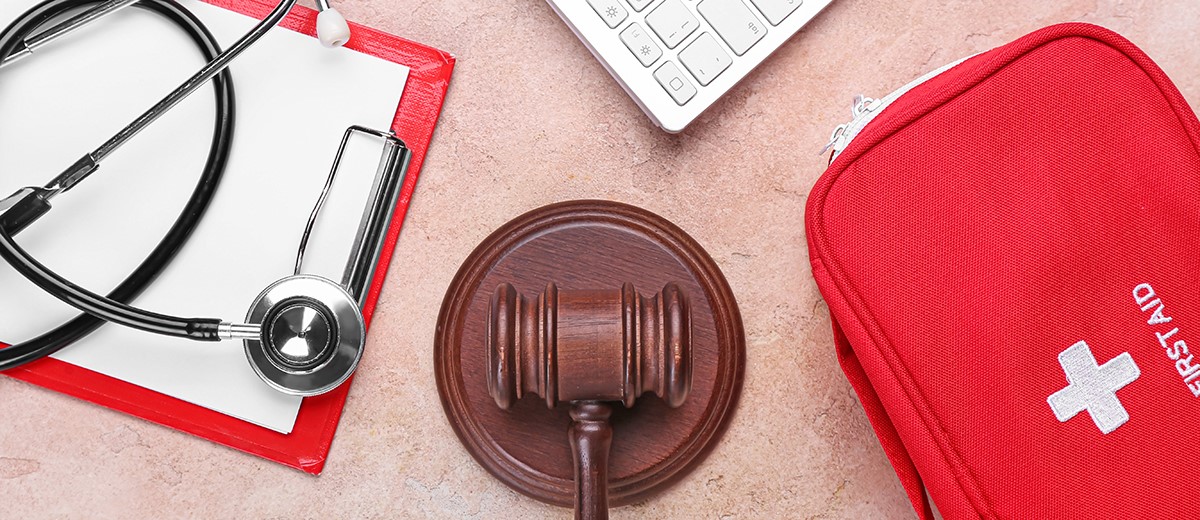As a school nurse, being aware of the potential malpractice risks is important. Because school nurses often work understaffed and under-resourced in professional isolation while bearing enormous responsibilities and experiencing numerous conflicts between education and health law, they are at higher risk for liability than nurses in other fields. While public schools are generally protected under their state's sovereign immunity laws as local government entities, this doesn't prevent school nurses from being named in a lawsuit or provide immunity for nursing board investigations or disciplinary actions. It's vital for all school nurses, whether they work in public, private, or parochial schools, to take steps to minimize their risk of malpractice litigation and protect their licensure.
Malpractice refers to any act or omission by a healthcare provider that deviates from accepted standards of practice and causes harm to a patient. In a malpractice case, four elements must be proven for the plaintiff to be successful. These elements include a duty owed to the patient, a breach of that duty, causation, and harm or damages.
- Duty. The duty owed to the patient is typically defined as a duty to provide care in accordance with the accepted standard of care. A breach of that duty occurs when the school nurse fails to provide care that meets the standard of care.
- Causation. Causation means that the breach of duty was the direct cause of the patient's injury or harm.
- Harm/Damages. Finally, damages refer to the harm or injury that the patient suffered as a result of the school nurse's breach of duty.
Understanding Malpractice Coverage
While the risk of malpractice may seem daunting, there are steps that school nurses can take to minimize their risk. Let's start with the basics. It's crucial to know if you're covered against claims of malpractice under your school or district's policy (you likely are). However, it's essential to understand the terms and conditions of such coverage and how you're protected. Don't hesitate to ask for specifics and documented proof of coverage, as verbal representation alone isn't enough. When checking the details, school nurses should confirm the coverage includes legal support for potential complaints filed with their state Board of Nursing, known as Board Actions. Facing a Board Action can be highly unnerving…and costly. School nurses without Board Action coverage might consider obtaining their own professional liability coverage.
Decreasing Liability Exposure
In addition to ensuring appropriate insurance coverage, school nurses must remain up-to-date on nursing laws and regulations and evidence-based standards to maintain clinical competency. A periodic review of your state's Nurse Practice Act and the NASN's Code of Ethics is essential to minimizing professional liability and working within the school nurse's scope of practice. Developing good interpersonal communication skills by building trusting relationships with students and their families and establishing high transparency, respect, and accountability is fundamental to safe school nurse practice. It has been shown to be the single most effective risk-reduction strategy in decreasing liability exposure.
Detailing Documentation
Finally, documentation. When it comes to medical malpractice lawsuits, the medical record is often the strongest and sometimes the only evidence that can be used to defend against allegations. If a student's health record shows that the school nurse followed the standards of practice, it becomes challenging for the plaintiff to prove that the nurse breached their duty. Records that establish compliance with policies, care plans, and orders from prescribers can serve as evidence that the school nurse acted in the way that another reasonably prudent nurse would have acted in similar circumstances. Documentation should include accurate details of assessments and interventions, as well as any communications with or attempts to contact the student, administrators, parents/guardians, or other providers, and must be maintained in compliance with applicable record-keeping laws and regulations.
Being a school nurse is stressful enough, so it's important to note that the risk of a school nurse being sued is statistically very low. However, knowing the elements of a malpractice suit and risk-reduction strategies can offer even greater personal and professional protection and provide the peace of mind needed to deliver quality and compassionate care to students.
Shop “Legal Resource for School Health Services” to learn more about malpractice and other legal issues impacting school nurses.





